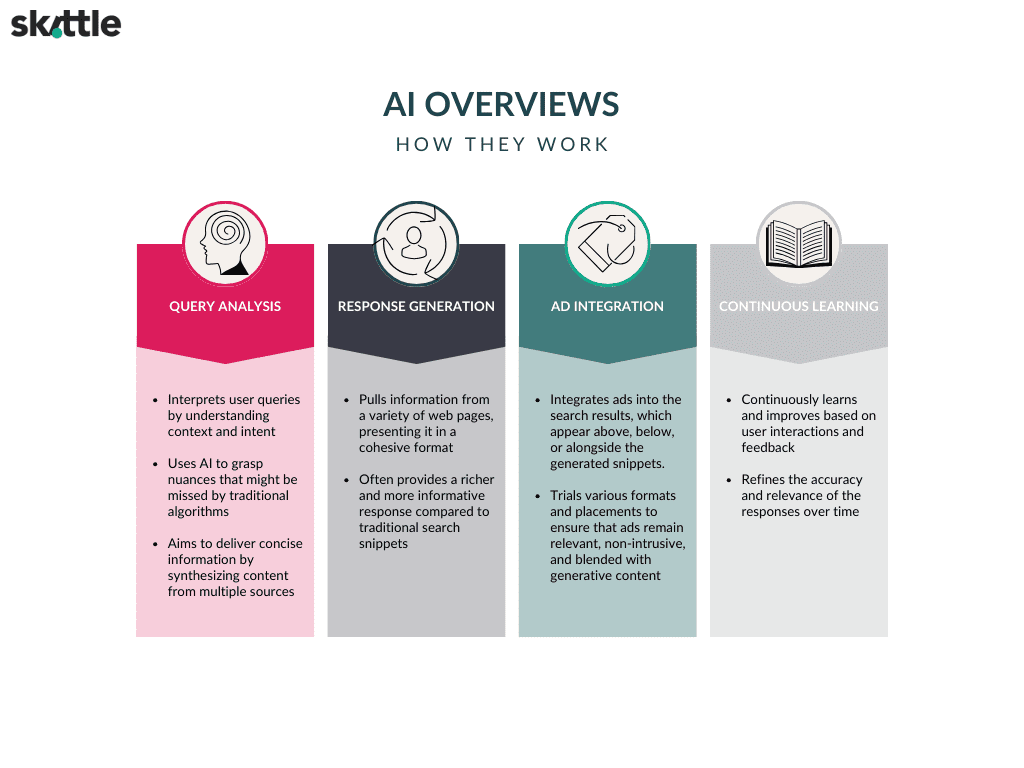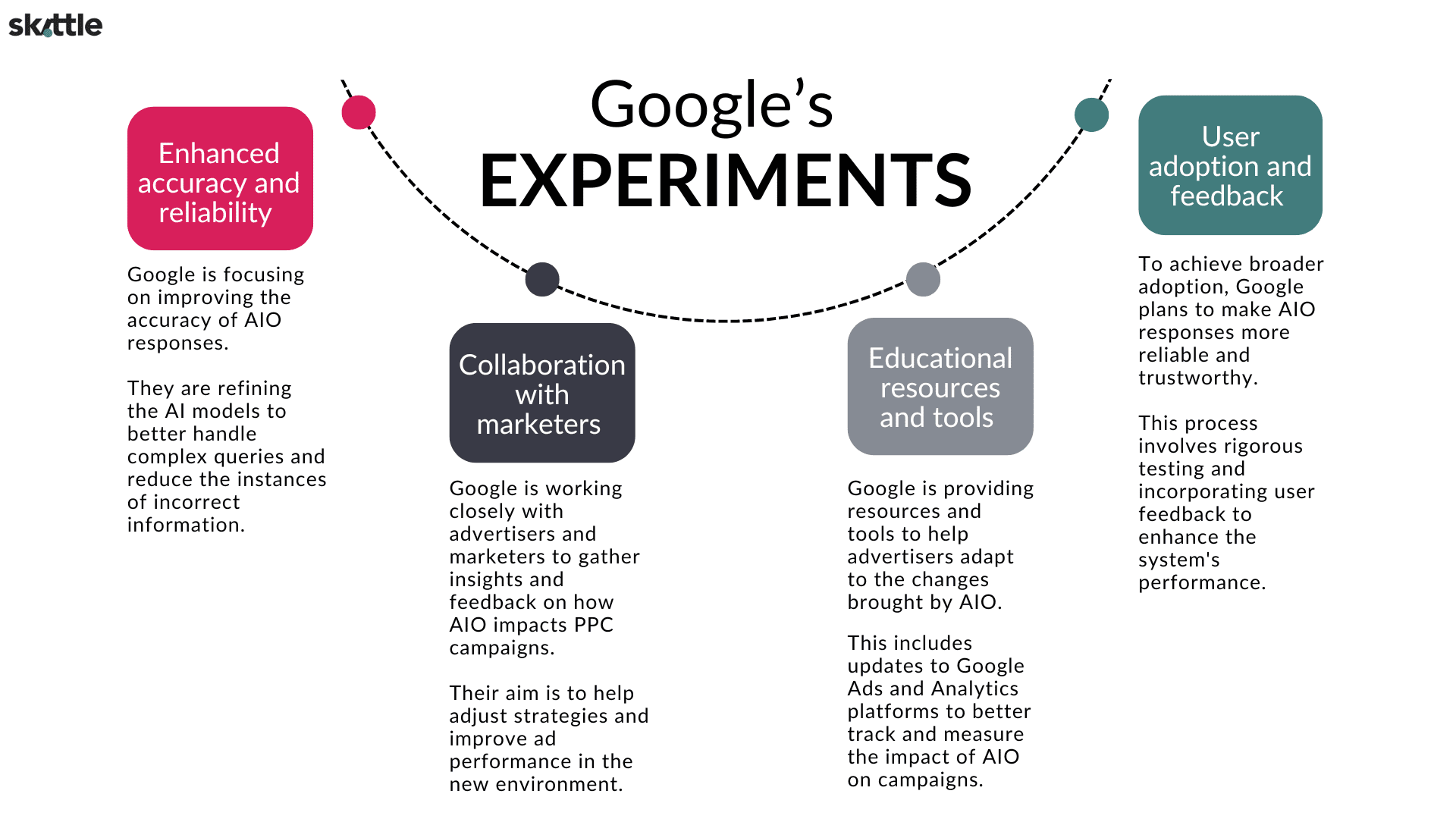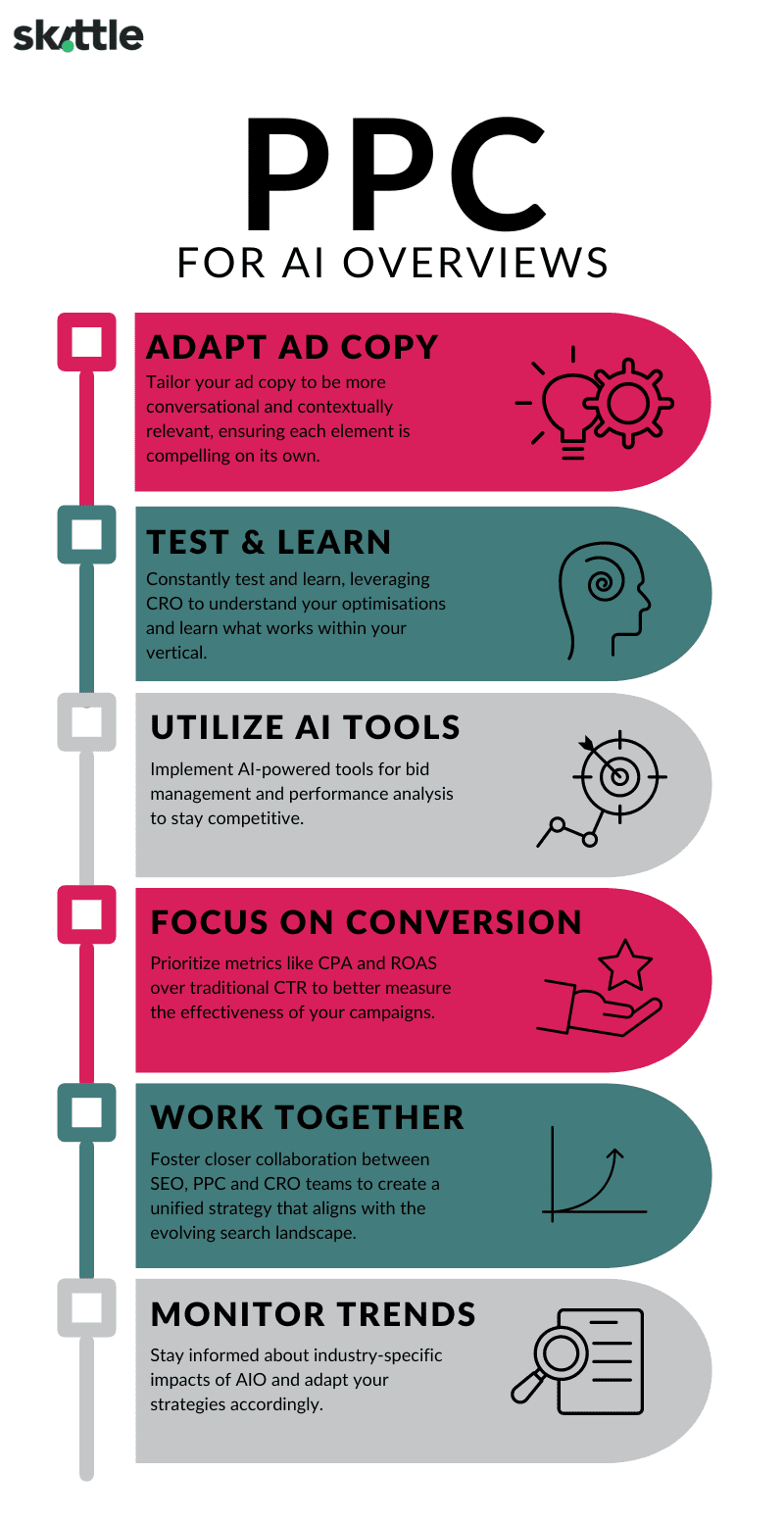Google’s rollout of AI Overviews is set to have a huge impact on organic search. However, there’s another area which needs to be considered – and that’s PPC advertising.
How can businesses prepare their paid strategy to future-proof against ad placements which are influenced by artificial intelligence? What impact might the change have on performance metrics?
We set out to answer these questions, and more, below.
But first, let’s understand how Google’s AI Overviews work.
Google AIO: The basics
Originally labelled SGE, or Search Generative Experience, in testing, Google has now rolled out a public version of its generative AI experiment called AIO – or AI Overviews.
The technology leverages advanced AI, particularly large language models (LLM) and natural language processing (NLP) to provide users with more comprehensive and contextually relevant search results.
So how does it work in practice?

Our webinar – Google AI: Rethinking Your Ranking Tactics – covers query analysis, response generation and continuous learning in the context of organic search.
However, paid search marketers will need to pay particular attention to the ways AI Overviews are approaching ad integration.
Google’s experiments
As mentioned above, Google is experimenting with different ad formats and placements within the AI Overviews framework.
This includes testing how ads can be naturally integrated into the conversational and generative context of AI Overviews.
That’s not the only way Google is experimenting with AI Overviews, however.

Pros and cons of PPC within AI Overviews
New AI technology, combined with experimentation, means there are plenty of changes coming for PPC practitioners.
There are both pros and cons to be aware of when considering paid strategy within the AI Overviews landscape.
Here are some of the considerations paid marketers may have to encounter, according to Skittle’s predictions:
Pros
Enhanced targeting
AIO can analyse user behaviour and preferences more accurately, enabling more precise targeting of ads based on user intent and context.
Improved ad relevance
With better understanding of user queries, AIO can ensure that ads are more relevant to the user’s search intent, potentially increasing click-through rates (CTR).
Increased engagement
More relevant and context-aware ads can lead to higher engagement rates, as users are presented with ads that closely match their needs and interests.
Cons
Complexity
The integration of AI can make PPC campaigns more complex, requiring advertisers to adapt to new tools and methodologies.
Cost implications
Advanced targeting and personalization might lead to increased competition and higher costs per click (CPC), particularly for highly sought-after keywords.
Data privacy
Enhanced personalization and targeting rely heavily on user data, which can raise privacy concerns and necessitate stringent compliance with data protection regulations.
Top 10 best practices for PPC optimisation Within AI Overviews
With all these changes to consider, how can PPC marketers turn such insights into actionable strategies?
Below, you’ll find our top 10 best practices for optimising paid strategy alongside the rollout of AI Overviews.
Focus on quality scores
Ensure your ads and landing pages are highly relevant to the keywords you are bidding on. Higher quality scores can lower your CPC and improve ad placements.
Improve ad copy for relevance
Create ad copy that directly addresses user intent and leverages natural language. Personalized and engaging ad copy is more likely to perform well in an AI-driven environment.
Implement solid keyword strategy
Use a mix of broad, phrase, and exact match keywords to capture a wide range of relevant searches. Conduct regular keyword research to stay updated with changing trends.
Utilize AI tools
Leverage AI-powered tools for ad creation, bid management, and performance analysis.
Look into ad extensions
Use ad extensions to provide additional information and increase the visibility and effectiveness of your ads.
Run A/B tests
Continuously run A/B tests on your ad copy, landing pages, and targeting strategies to identify what works best.
Explore Responsive Search Ads (RSAs)
Implement RSAs to allow Google’s AI to test multiple headlines and descriptions, automatically selecting the best-performing combinations.
Segment your audiences
Use advanced audience targeting options to reach specific user segments based on their behaviour, interests, and demographics.
Manage budgets effectively
Monitor and adjust your budget allocations regularly to ensure you are investing in the most effective campaigns and keywords.
Don’t forget compliance and privacy
Ensure your campaigns comply with data protection regulations such as GDPR. Be transparent about data usage and provide users with privacy controls.







